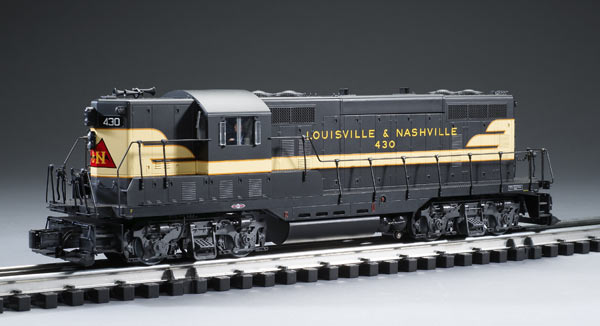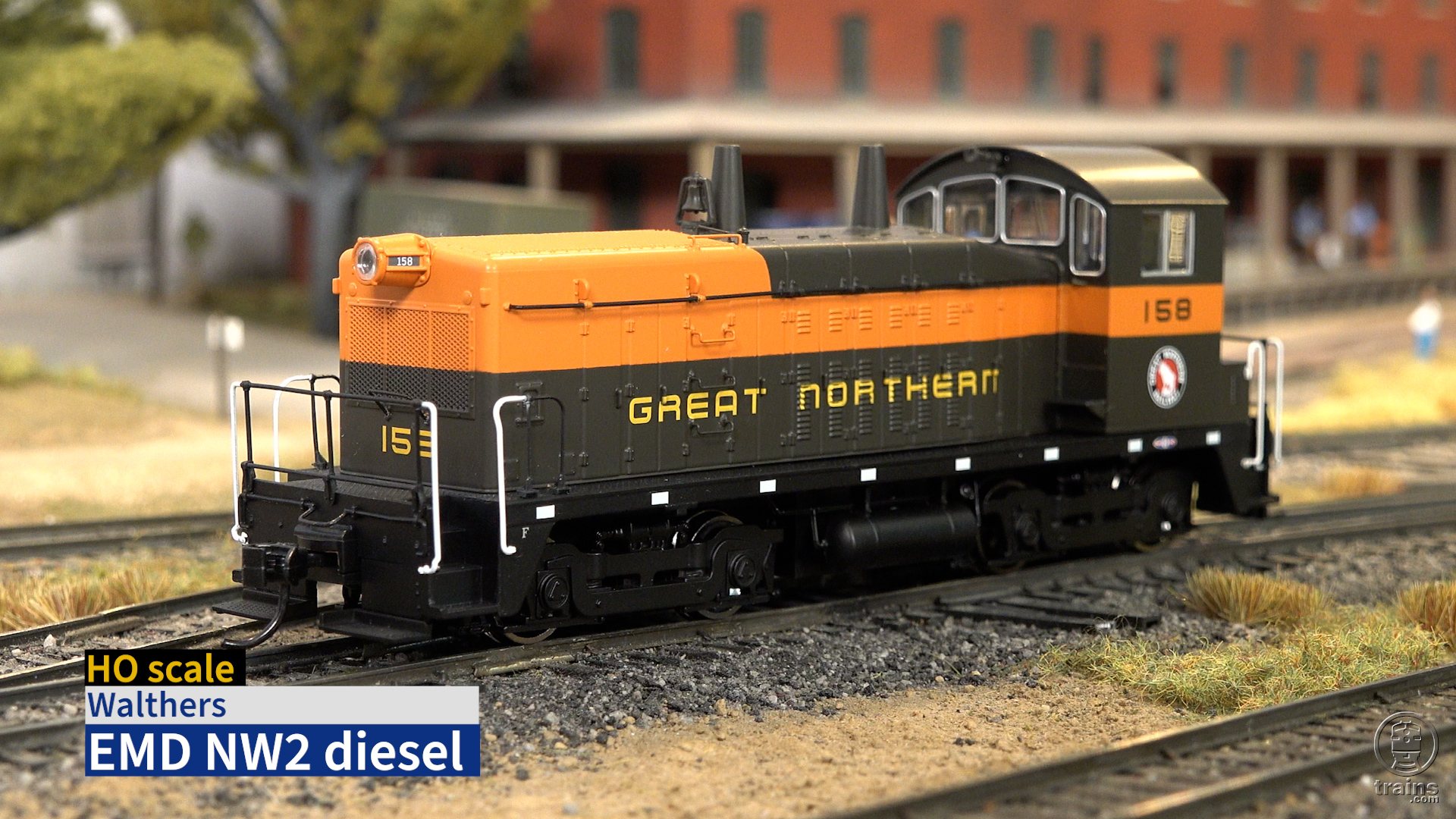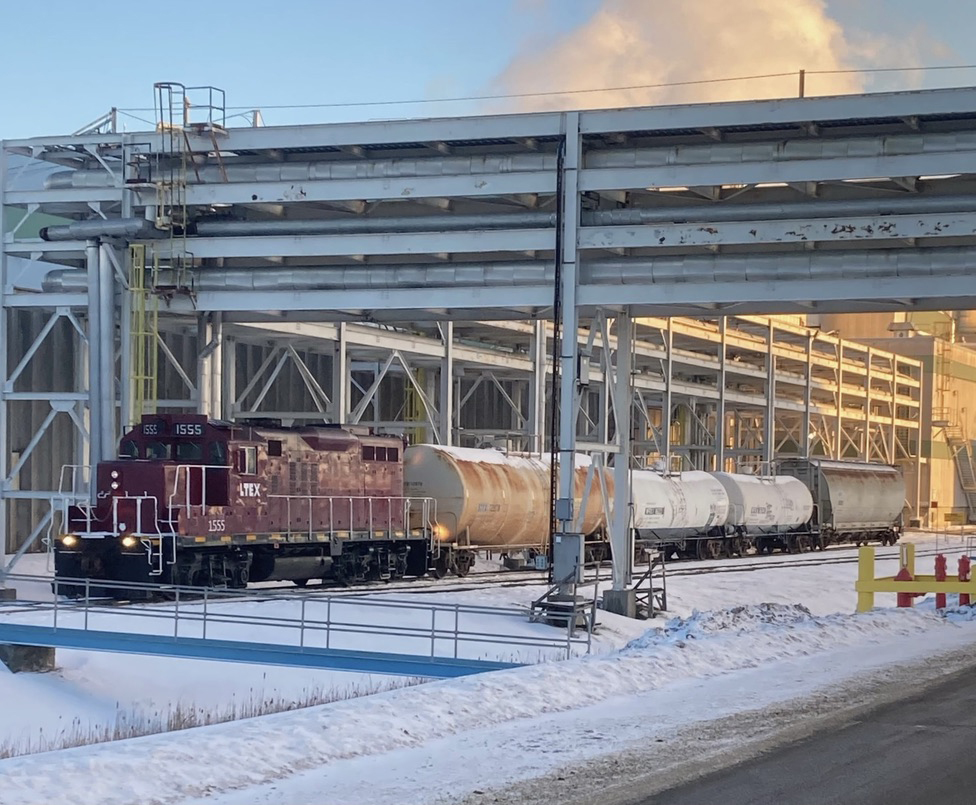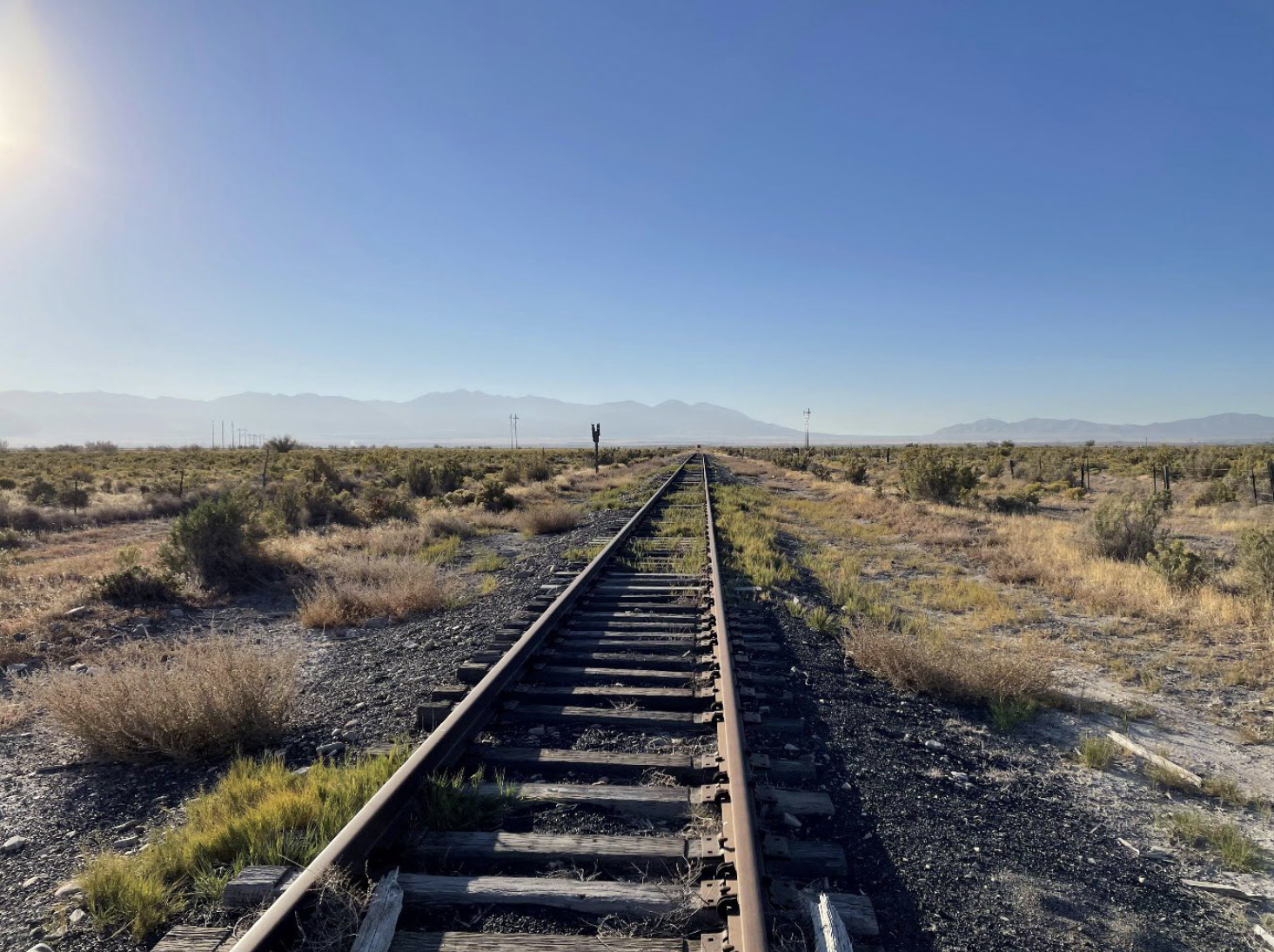In the real world, the 1,500-horsepower GP7 was built from 1949 to 1954, while the 1,750-horsepower GP9 followed, produced from 1954 to 1959. More than 2,600 GP7s and 3,500 GP9s were made during that decade. If you look hard, you may find some in service.
The model
Though we previously reviewed an Atlas O GP9 in 2005, this is our first crack at an Atlas O GP7, and this model is a solid representation of the type.
The pilot features pilot-mounted footboards (outlawed on new locomotives starting in 1975 in the name of crew safety), a single brake line, and a simulated uncoupler arm. Both the footboards and the steps on the pilot have see-through water drain holes, which is pretty neat. All along the deck, you have safety tread, plus finely done handrails and safety chains for the drop-down decks.
The carbody is surprisingly devoid of see-through screens. All screens and louvers are cast in. That being noted, the level of cast-in hinge, latch, and seam detail is clear and sharp.
The rooftop has four see-through cooling units with white-bladed fans that move if you blow on them. There are also two exhaust points, one a raised “stack.” There are 15 lift rings at various points on the topside.
There is a removable roof panel to allow for placement of the battery, but this was pretty snug and very reluctant to come off when I tried to remove it. My general philosophy isn’t to force such things (or apply sharp-edged tools), so the engine remained battery-less during testing.
For me, the standout detail point of this model is the double light array on each end. A larger headlight, with a smaller strobe/Mars light placed just beneath it. The model would not be complete without the contrasting black and cream of the Louisville & Nashville paint scheme and the column of grab irons leading to the roof of the unit.
The quad headlight rig is prototypical for L&N diesels, so if you want a Phase II Geep and this feature appeals to you, check the Atlas O Web site (atlaso.com) to see whether or not it is included in your road name of choice. Otherwise, you may want to consider repainting the L&N model.
Other body details include a manual hand brake lever at the long end.
The fuel sight gauge and fuel cap are neatly accented in red paint, and the frame has tiny-but-readable builder’s and trust plates applied.
The tooling for the metal trucks is clean and crisp, and the brake shoes are clean and clear and look ready for road service. You’ll also find very fine wires representing sand lines.
Our sample is decorated in the L&N’s black and cream paint scheme, which was the first applied to the road’s GP7s when they were new in 1952. Painting of the model is superb.
Separation lines between the colors are clear and precise, and we noticed no flaws in the application of the paint.
This earlier, more sophisticated scheme looks as though it would be at home on a coal train or a local passenger run up some country “holler.”
On the test track
There are four power pickup rollers, two mounted on each truck. The placement struck me as being unique – the dual rollers on each truck are set closely together and mounted pointing toward the rear of the truck, rather than one forward and one rearward.
At about the same time we received the GP7, we took delivery of an Atlas O General Electric U23B, a model that has a single forward-facing roller on each truck. We didn’t notice any significant difference in performance of the two models, but just thought the arrangement was curious.
Our low-speed average on the GP7 was 5 scale miles per hour, and the high-end speed was 70 scale miles per hour. Drawbar pull for the Geep was 2 pounds, 7 ounces.
The TrainMaster and RailSounds systems performed well. The command system functions worked as advertised, and the sound system was solid, and nicely reproduced the familiar EMD prime mover rumble.
The model is equipped with Train America Studio’s excellent Engineer-On-Board speed control, a great feature (unless you perfer to constantly fiddle with your transformer’s controls).
I really hate using the word ubiquitous, but the EMD GP7 was just that, seemingly everywhere, doing every job from commuter hauler, to work train, to through freight. Accordingly, if you need an all-round utility engine that looks great and performs even better, check out the Atlas O GP7.
Price: $469.95 (powered), $209.95 (unpowered)
Features: O-36 operation, two can-style motors, Lionel RailSounds and TrainMaster systems, speed control, coil couplers
Staff comments: I especially like the beautiful color scheme and great details on this handsome locomotive – Patti Keipe, graphic designer














